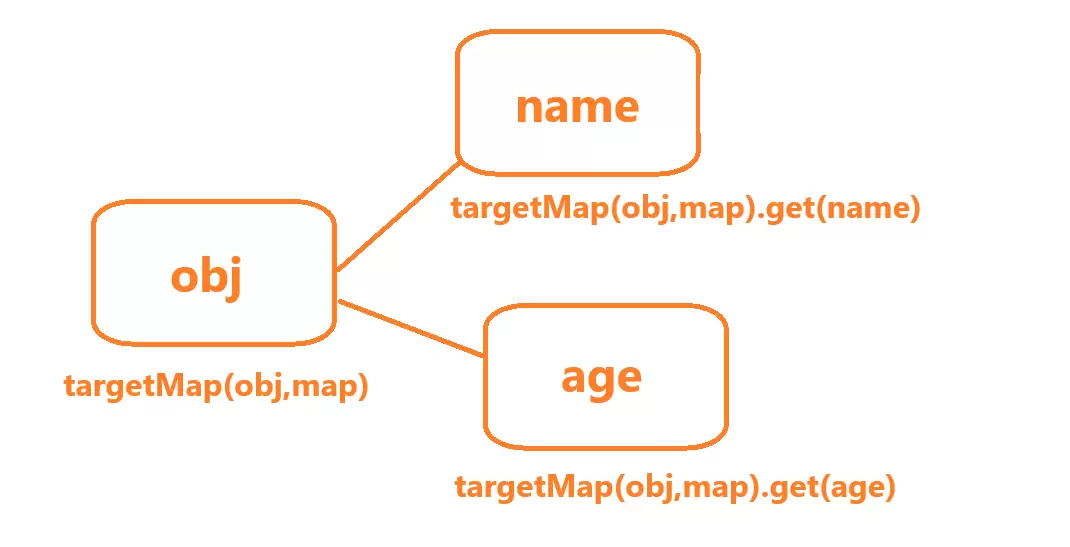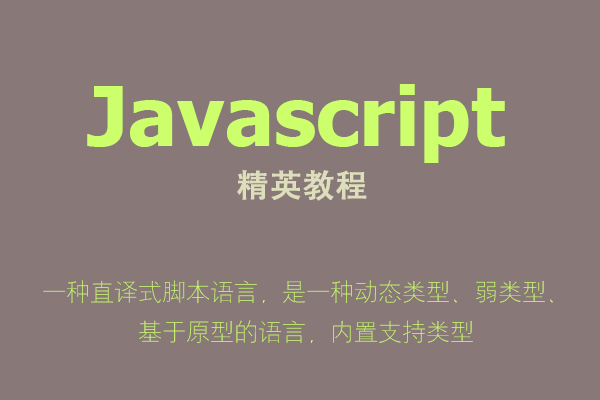Vue 3是一个流行的JavaScript框架,被广泛用于构建用户界面。Vue 3提供了一系列强大而灵活的功能,其中之一就是Teleport组件。Teleport组件允许我们将HTML元素移动到DOM中的其他位置,这为我们提供了更大的灵活性和控制力。
使用Teleport组件的好处
Teleport组件的主要好处之一是在应用程序中可以更方便地控制元素的渲染位置。传统上,我们通过将元素放置在组件的特定位置来控制其渲染位置,但这可能会限制我们的灵活性。Teleport组件解决了这个问题,我们可以使用Teleport的目标属性将元素移动到DOM中的其他位置。
另一个好处是,Teleport组件可以帮助我们处理一些特殊的UI需求。例如,在开发一个对话框或弹出层组件时,我们希望能够将这些内容渲染到body元素的底部,以确保其始终在其他元素之上。Teleport组件允许我们使用目标属性将组件的内容渲染到body元素中,从而实现这一目标。
Teleport 组件解决的问题
版本:3.2.31
如果要实现一个 "蒙层" 的功能,并且该 "蒙层" 可以遮挡页面上的所有元素,通常情况下我们会选择直接在 标签下渲染 "蒙层" 内容。如果在Vue.js 2 中实现这个功能,只能通过原生 DOM API 来手动搬运 DOM元素实现,这就会使得元素的渲染与 Vue.js 的渲染机制脱节,并会导致各种可预见或不可遇见的问题。
Vue.js 3 中内建的 Teleport 组件,可以将指定内容渲染到特定容器中,而不受DOM层级的限制。可以很好的解决这个问题。文章地址https://www.yii666.com/blog/299778.html网址:yii666.com
下面,我们来看看 Teleport 组件是如何解决这个问题的。如下是基于 Teleport 组件实现的蒙层组件的模板:
<template>
<Teleport to="body">
<div class="overlay"></div>
</Teleport>
</template>
<style scoped>
.verlay {
z-index: 9999;
}
</style>
可以看到,蒙层组件要渲染的内容都包含在 Teleport 组件内,即作为 Teleport 组件的插槽。
通过为 Teleport 组件指定渲染目标 body,即 to 属性的值,该组件就会把它的插槽内容渲染到 body 下,而不会按照模板的 DOM 层级来渲染,于是就实现了跨 DOM 层级的渲染。
从而实现了蒙层可以遮挡页面中的所有内容。
Teleport 组件的基本结构
// packages/runtime-core/src/components/Teleport.ts
export const TeleportImpl = {
// Teleport 组件独有的特性,用作标识
__isTeleport: true,
// 客户端渲染 Teleport 组件
process() {},
// 移除 Teleport
remove() {},
// 移动 Teleport
move: moveTeleport,
// 服务端渲染 Teleport
hydrate: hydrateTeleport
}
export const Teleport = TeleportImpl as any as {
__isTeleport: true
new (): { $props: VNodeProps & TeleportProps }
}
我们对 Teleport 组件的源码做了精简,如上面的代码所示,可以看到,一个组件就是一个选项对象。Teleport 组件上有 __isTeleport、process、remove、move、hydrate 等属性。其中 __isTeleport 属性是 Teleport 组件独有的特性,用作标识。process 函数是渲染 Teleport 组件的主要渲染逻辑,它从渲染器中分离出来,可以避免渲染器逻辑代码 "膨胀"。
Teleport 组件 process 函数
process 函数主要用于在客户端渲染 Teleport 组件。由于 Teleport 组件需要渲染器的底层支持,因此将 Teleport 组件的渲染逻辑从渲染器中分离出来,在 Teleport 组件中实现其渲染逻辑。这么做有以下两点好处:网址:yii666.com<
-
可以避免渲染器逻辑代码 "膨胀";
-
当用户没有使用 Teleport 组件时,由于 Teleport 的渲染逻辑被分离,因此可以利用 Tree-Shaking 机制在最终的 bundle 中删除 Teleport 相关的代码,使得最终构建包的体积变小。
patch 函数中对 process 函数的调用如下:
// packages/runtime-core/src/renderer.ts
const patch: PatchFn = (
n1,
n2,
container,
anchor = null,
parentComponent = null,
parentSuspense = null,
isSVG = false,
slotScopeIds = null,
optimized = __DEV__ && isHmrUpdating ? false : !!n2.dynamicChildren
) => {
// 省略部分代码
const { type, ref, shapeFlag } = n2
switch (type) {
// 省略部分代码
default:
// 省略部分代码
// shapeFlag 的类型为 TELEPORT,则它是 Teleport 组件
// 调用 Teleport 组件选项中的 process 函数将控制权交接出去
// 传递给 process 函数的第五个参数是渲染器的一些内部方法
else if (shapeFlag & ShapeFlags.TELEPORT) {
;(type as typeof TeleportImpl).process(
n1 as TeleportVNode,
n2 as TeleportVNode,
container,
anchor,
parentComponent,
parentSuspense,
isSVG,
slotScopeIds,
optimized,
internals
)
}
// 省略部分代码
}
// 省略部分代码
}
从上面的源码中可以看到,我们通过vnode 的 shapeFlag 来判断组件是否是 Teleport 组件。如果是,则直接调用组件选项中定义的 process 函数将渲染控制权完全交接出去,这样就实现了渲染逻辑的分离。
Teleport 组件的挂载
// packages/runtime-core/src/components/Teleport.ts
if (n1 == null) {
// 首次渲染 Teleport
// insert anchors in the main view
// 往 container 中插入 Teleport 的注释
const placeholder = (n2.el = __DEV__
? createComment('teleport start')
: createText(''))
const mainAnchor = (n2.anchor = __DEV__
? createComment('teleport end')
: createText(''))
insert(placeholder, container, anchor)
insert(mainAnchor, container, anchor)
// 获取容器,即挂载点
const target = (n2.target = resolveTarget(n2.props, querySelector))
const targetAnchor = (n2.targetAnchor = createText(''))
// 如果挂载点存在,则将
if (target) {
insert(targetAnchor, target)
// #2652 we could be teleporting from a non-SVG tree into an SVG tree
isSVG = isSVG || isTargetSVG(target)
} else if (__DEV__ && !disabled) {
warn('Invalid Teleport target on mount:', target, `(${typeof target})`)
}
// 将 n2.children 渲染到指定挂载点
const mount = (container: RendererElement, anchor: RendererNode) => {
// Teleport *always* has Array children. This is enforced in both the
// compiler and vnode children normalization.
if (shapeFlag & ShapeFlags.ARRAY_CHILDREN) {
// 调用渲染器内部的 mountChildren 方法渲染 Teleport 组件的插槽内容
mountChildren(
children as VNodeArrayChildren,
container,
anchor,
parentComponent,
parentSuspense,
isSVG,
slotScopeIds,
optimized
)
}
}
// 挂载 Teleport
if (disabled) {
// 如果 Teleport 组件的 disabled 为 true,说明禁用了 <teleport> 的功能,Teleport 只会在 container 中渲染
mount(container, mainAnchor)
} else if (target) {
// 如果没有禁用 <teleport> 的功能,并且存在挂载点,则将其插槽内容渲染到target容中
mount(target, targetAnchor)
}
}
从上面的源码中可以看到,如果旧的虚拟节点 (n1) 不存在,则执行 Teleport 组件的挂载。然后调用 resolveTarget 函数,根据 props.to 属性的值来取得真正的挂载点。
如果没有禁用 的功能 (disabled 为 false ),则调用渲染器内部的 mountChildren 方法将 Teleport 组件挂载到目标元素中。如果 的功能被禁用,则 Teleport 组件将会在周围父组件中指定了 的位置渲染。
Teleport 组件的更新
Teleport 组件在更新时需要考虑多种情况,如下面的代码所示:文章来源地址:
// packages/runtime-core/src/components/Teleport.ts
else {
// 更新 Teleport 组件
// update content
n2.el = n1.el
const mainAnchor = (n2.anchor = n1.anchor)!
// 挂载点
const target = (n2.target = n1.target)!
// 锚点
const targetAnchor = (n2.targetAnchor = n1.targetAnchor)!
// 判断 Teleport 组件是否禁用了
const wasDisabled = isTeleportDisabled(n1.props)
// 如果禁用了 <teleport> 的功能,那么挂载点就是周围父组件,否则就是 to 指定的目标挂载点
const currentContainer = wasDisabled ? container : target
const currentAnchor = wasDisabled ? mainAnchor : targetAnchor
// 目标挂载点是否是 SVG 标签元素
isSVG = isSVG || isTargetSVG(target)
// 动态子节点的更新
if (dynamicChildren) {
// fast path when the teleport happens to be a block root
patchBlockChildren(
n1.dynamicChildren!,
dynamicChildren,
currentContainer,
parentComponent,
parentSuspense,
isSVG,
slotScopeIds
)
// even in block tree mode we need to make sure all root-level nodes
// in the teleport inherit previous DOM references so that they can
// be moved in future patches.
// 确保所有根级节点在移动之前可以继承之前的 DOM 引用,以便它们在未来的补丁中移动
traverseStaticChildren(n1, n2, true)
} else if (!optimized) {
// 更新子节点
patchChildren(
n1,
n2,
currentContainer,
currentAnchor,
parentComponent,
parentSuspense,
isSVG,
slotScopeIds,
false
)
}
// 如果禁用了 <teleport> 的功能
if (disabled) {
if (!wasDisabled) {
// enabled -> disabled
// move into main container
// 将 Teleport 移动到container容器中
moveTeleport(
n2,
container,
mainAnchor,
internals,
TeleportMoveTypes.TOGGLE
)
}
} else {
// 没有禁用 <teleport> 的功能,判断 to 是否发生变化
// target changed
// 如果新旧 to 的值不同,则需要对内容进行移动
if ((n2.props && n2.props.to) !== (n1.props && n1.props.to)) {
// 获取新的目标容器
const nextTarget = (n2.target = resolveTarget(
n2.props,
querySelector
))
if (nextTarget) {
// 移动到新的容器中
moveTeleport(
n2,
nextTarget,
null,
internals,
TeleportMoveTypes.TARGET_CHANGE
)
} else if (__DEV__) {
warn(
'Invalid Teleport target on update:',
target,
`(${typeof target})`
)
}
} else if (wasDisabled) {
// disabled -> enabled
// move into teleport target
//
moveTeleport(
n2,
target,
targetAnchor,
internals,
TeleportMoveTypes.TOGGLE
)
}
}
}
如果 Teleport 组件的子节点中有动态子节点,则调用 patchBlockChildren 函数来更新子节点,否则就调用 patchChildren 函数来更新子节点。
接下来判断 Teleport 的功能是否被禁用。如果被禁用了,即 Teleport 组件的 disabled 属性为 true,此时 Teleport 组件只会在周围父组件中指定了 的位置渲染。
如果没有被禁用,那么需要判断 Teleport 组件的 to 属性值是否发生变化。如果发生变化,则需要获取新的挂载点,然后调用 moveTeleport 函数将Teleport组件挂载到到新的挂载点中。如果没有发生变化,则 Teleport 组件将会挂载到先的挂载点中。
moveTeleport 移动Teleport 组件
// packages/runtime-core/src/components/Teleport.ts
// 服务端渲染 Teleport
function hydrateTeleport(
node: Node,
vnode: TeleportVNode,
parentComponent: ComponentInternalInstance | null,
parentSuspense: SuspenseBoundary | null,
slotScopeIds: string[] | null,
optimized: boolean,
{
o: { nextSibling, parentNode, querySelector }
}: RendererInternals<Node, Element>,
hydrateChildren: (
node: Node | null,
vnode: VNode,
container: Element,
parentComponent: ComponentInternalInstance | null,
parentSuspense: SuspenseBoundary | null,
slotScopeIds: string[] | null,
optimized: boolean
) => Node | null
): Node | null {
// 获取挂载点
const target = (vnode.target = resolveTarget<Element>(
vnode.props,
querySelector
))
if (target) {
// if multiple teleports rendered to the same target element, we need to
// pick up from where the last teleport finished instead of the first node
const targetNode =
(target as TeleportTargetElement)._lpa || target.firstChild
if (vnode.shapeFlag & ShapeFlags.ARRAY_CHILDREN) {
// <teleport> 的功能被禁用,将 Teleport 渲染到父组件中指定了 <teleport> 的位置
if (isTeleportDisabled(vnode.props)) {
vnode.anchor = hydrateChildren(
nextSibling(node),
vnode,
parentNode(node)!,
parentComponent,
parentSuspense,
slotScopeIds,
optimized
)
vnode.targetAnchor = targetNode
} else {
vnode.anchor = nextSibling(node)
// 将 Teleport 渲染到目标容器中
vnode.targetAnchor = hydrateChildren(
targetNode,
vnode,
target,
parentComponent,
parentSuspense,
slotScopeIds,
optimized
)
}
;(target as TeleportTargetElement)._lpa =
vnode.targetAnchor && nextSibling(vnode.targetAnchor as Node)
}
}
return vnode.anchor && nextSibling(vnode.anchor as Node)
}
可以看到,在服务端渲染 Teleport 组件时,调用的是服务端渲染的 hydrateChildren 函数来渲染Teleport的内容。如果 的功能被禁用,将 Teleport 渲染到父组件中指定了 的位置,否则将 Teleport 渲染到目标容器target中。
总结
Vue 3的Teleport组件提供了在应用程序中控制元素渲染位置的灵活性和控制力。通过使用Teleport组件,我们可以轻松地将HTML元素移动到DOM中的其他位置,这为我们开发具有特殊UI需求的组件提供了便利。Teleport组件是Vue 3的一个强大工具,赋予开发者更大的灵活性,提高了用户界面的交互性。
 51工具盒子
51工具盒子






